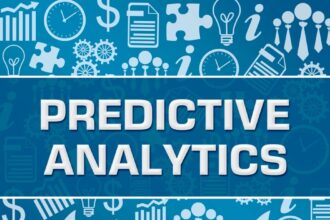CAN was started in 2008, to make predictive analytics applicable and accessible to businesses of almost any size. To fulfill our mission we have become experts in helping our clients adopt predictive analytics. The first step in adopting predictive analytics is to start building an analytical culture. In an analytical culture, people:
CAN was started in 2008, to make predictive analytics applicable and accessible to businesses of almost any size. To fulfill our mission we have become experts in helping our clients adopt predictive analytics. The first step in adopting predictive analytics is to start building an analytical culture. In an analytical culture, people:
Know the Numbers: Everyone should know what is happening and whether certain strategies were successful. The objective of knowing the numbers is not to judge individuals or the team, but learn from the past and refine future attempts at innovation.
Examine the Numbers: In order to effectively discuss and examine the numbers, team members should be familiar with the numbers, their assumptions, and their application.
Use the Numbers: The ultimate goal of adopting analytics is to make better decisions. This is the hardest and most complex phase of becoming analytical. However, when achieved, this stage provides the highest Return on Investment (ROI). It requires participating members to understand factors driving the numbers, historical paradigm shifts, and the assumptions used to make decisions. Once the factors and assumptions are understood, they can be utilized properly to optimize processes and predict outcomes of specific decisions.
The Analytical Portal
The key to building an analytical culture is to make analytics easy to use, understand, and accessible. The easiest way to do this is to develop an analytical portal. The purpose of the analytical portal is to allow everyone in your organization to know, examine, and use the numbers without having to contact the accounting and information technology departments every time a report or numbers are needed. Your analytical portal should allow people to have access to 5 business intelligence tools:
Dashboards will be used to quickly and easily report key metrics. The key to building successful dashboards is to choose the correct metrics and provide quick and easy access. Dashboards as well as scorecards will allow team members to see the big picture and drill down into finer details on a need to know basis. Dashboards differ from slicing & dicing data in that dashboards are predetermined visualizations of key metrics that are the same across individuals and time.
Detailed Reports are to be read before using analytics to make decisions. These are designed to ensure that statistics, equations, metrics and other reports analytics are fully understood. This will ensure that recommendations are properly implemented.
Slicing & Dicing Data allows your employees to ask questions about the data and get quick responses. People should be able to quickly pull any data that they want from a variety of data sources such as the census, economic data, news sources via text mining, social media, surveys, and internal databases.
Predictive Analytics allows your employees to understand the relationship between outcomes and the variables that drive them. The results of predictive analytics can be used to simulate the outcome of specific decisions and create strategies to maximize outcomes.
Alerts & Notifications are the watchdogs of analytics. They provide a dependable and timely way to bring awareness to team members about important events, but are not distracted by smaller, less significant changes. If properly implemented, managers will spend less time monitoring employees and more time addressing key issues. Alerts & Notifications can be sent via email, dashboard widget or text message.









